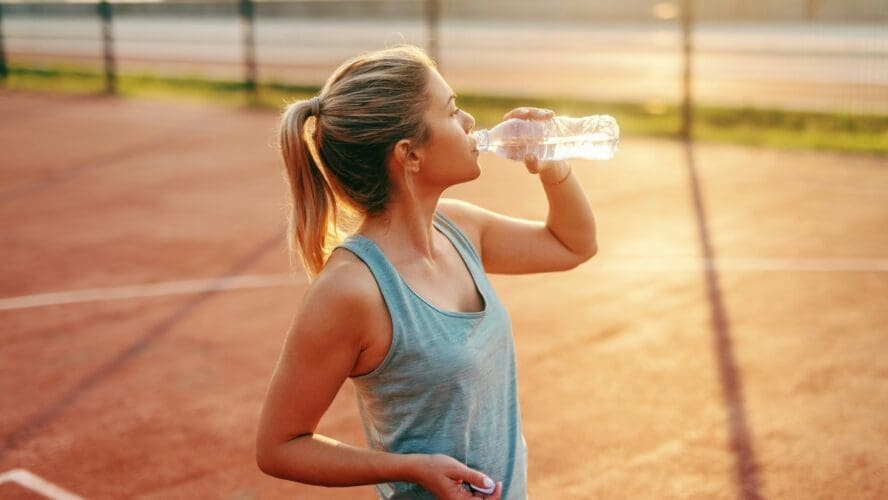
A liter of bottled water contains an average of 240,000 microplastic particles, according to a 2024 study in the Proceedings of the National Academy of Sciences1. Since Americans consume about 60.5 billion liters of bottled water per year, it’s fair to say the microplastics consumed through this method alone could have a major impact on public health2.
But all is not lost. Experts suggest that conventional water treatment plants should already provide advanced microplastics removal. Plus, granular activated carbon (GAC) filtration units in most water treatment plants also greatly improve the effectiveness of microplastics and nanoplastics removal3.
Regulating plastic use in food and drink products, choosing tap water over bottled water, and promoting biodegradable plastic products are all ways we can reduce the microplastics we ingest daily. Keep reading to learn what research says about the effects of microplastics on health, as well as some practical solutions to help reduce your exposure to microplastics.
What Recent Research Reveals
A 2024 study by Columbia University researchers applied a new technology known as stimulated Raman scattering (SRS) microscopy to detect microplastics and nanoplastics in bottled water4. After analyzing three popular brands with this new technology, they found that the average liter of bottled water contained around 240,000 tiny pieces of plastic. This was a whopping 10 to 100 times more than they were able to see in previous studies without this technology.
How Do Microplastics End Up in Water Bottles?
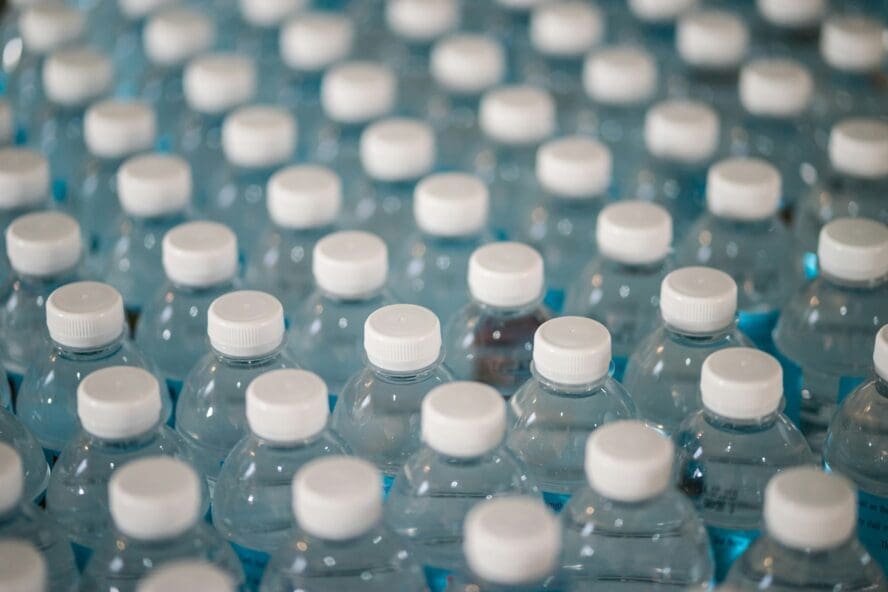
These small plastic particles can come from a variety of sources before these water bottles land at your local supermarket and into your pantry or fridge. During the manufacturing process, plastic particles can easily become airborne and enter the water supply5. Not to mention that existing plastic pollution in waterways may mean that the source water already contains some microplastics before it ever enters a plastic water bottle.
Finally, microplastics can enter bottled water through the actual bottle and cap itself6. The plastic bottles may degrade slightly during production, packaging, and transportation, causing particles to further contaminate your water. Exposure to sunlight and extreme temperatures can further accelerate plastic breakdown, causing more particles to release themselves into your refreshing drink. So if you have to drink it, practice bottled water safety — skip the fridge and avoid leaving your bottles in direct sunlight or a hot car.
Health Risks: What the Science Actually Shows
Now that we know how prevalent microplastics are in bottled water, what does that actually mean for our health? Let’s take a look at the risks of consuming microplastics for both children and adults.
Current Evidence on Human Health Effects
Researchers at Stanford University are currently studying a possible link between microplastics and cardiovascular events. Their findings so far reveal that microplastics and nanoplastics can actually get inside cells and alter gene expression, which could increase one’s risk of developing cardiac disease7.
A 2024 review of 26 studies on microplastics and health in the Journal of Global Health shows that microplastics were found in eight of twelve organ systems: cardiovascular, digestive, endocrine, integumentary, lymphatic, respiratory, reproductive, and urinary systems8. These microplastics introduce chemicals like bisphenol A (BPA), phthalates, and industrial lubricants into the body, which can cause inflammation, hormone disruption, and an increased risk of diabetes9,10.
Nanoplastics’ health effects are even more concerning because their smaller size makes it easier for them to enter cells. A 2025 study in the International Journal of Molecular Sciences shows that nanoplastics can cause a chronic inflammatory state that can increase one’s risk of autoimmune disorders, cardiovascular ailments, and neurodegenerative conditions, to name a few11.
Why Children Face Higher Risks
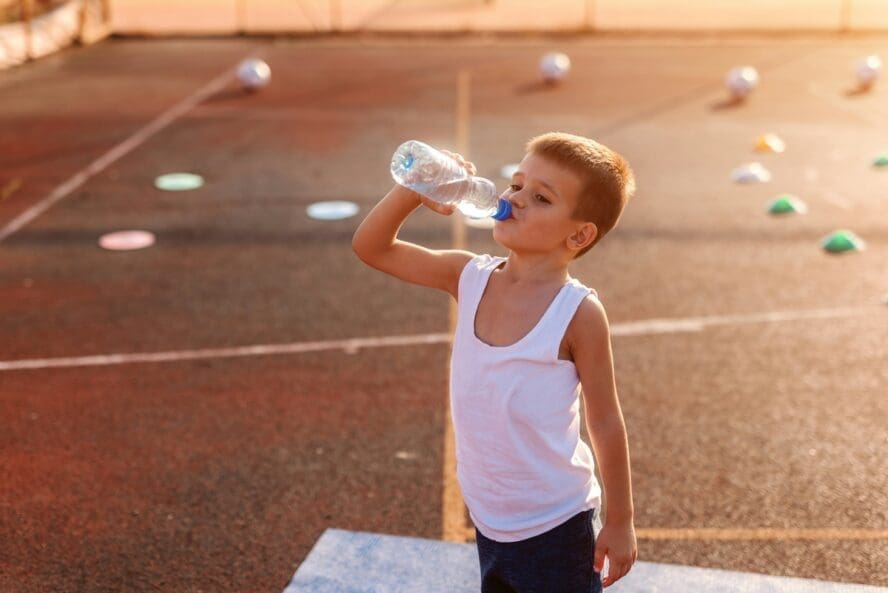
Unsurprisingly, the impact of microplastics on children’s health is especially concerning. Not only are their metabolic pathways different from an adult’s, but their smaller size means they receive a higher exposure of microplastics with the same intake12.
A 2024 study in Clinical and Experimental Pediatrics shows that bisphenols and phthalates can disrupt the developing endocrine system, which may also alter immune function13. A 2025 study in the journal Ecotoxicology and Environmental Safety also reports that higher urinary microplastics levels in school children were linked to impaired memory14.
Bottled vs. Tap Water: The Surprising Truth
When it comes to plastic particles, tap water actually contains much less than bottled water. In fact, a 2024 study in the journal Scientific Reports suggests that some tap water could have 200 to 300 times less microplastic content than bottled water in that same region15. This is most likely due to additional plastic leaching as the water bottle is opened, squeezed, or exposed to heat.
It’s also important to realize that the microplastic content of water can vary from region to region depending on the quality of source water, as well as the water filtration methods used to clean it before consumption. For example, in areas near dense human population centers, large urban areas, and their associated river systems, there may be more microplastic contamination in tap water than in more rural areas16.
A Lack of Regulations Around Microplastic Pollution
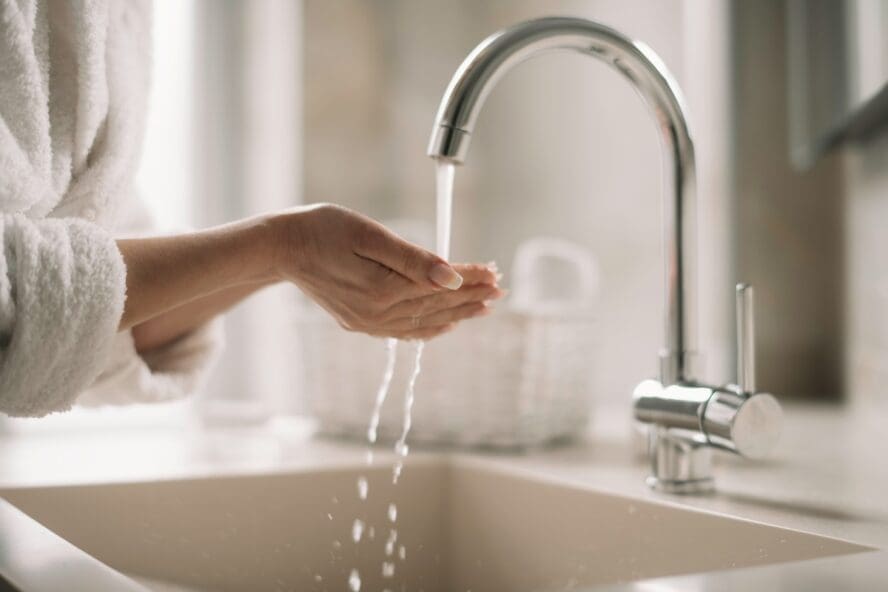
To help control microplastic pollution in drinking water, the Food & Drug Administration (FDA) continues to conduct research on the topic17. Unfortunately, no solid regulations have been set so far in the United States. This is in direct contrast to the European Union (EU), which passed a bill in 2023 known as “the microplastics restriction.” This bill restricts synthetic polymer microparticles from being sold on their own or intentionally added to mixtures18.
However, despite the abundance of evidence regarding the harmful health effects of microplastics, neither of these regions has comprehensive microplastics regulation19. There are also no established industry standards around microplastics in water yet, but testing protocols are frequently being improved to help detect such compounds in the water and food supply.
One particularly effective testing protocol for detecting microplastics is called high-throughput Raman spectroscopy (HTS-RS). HTS-RS can efficiently detect and characterize the chemical composition of microplastics across a wide range of particle sizes and shapes20. The International Organization for Standardization (ISO) 24187 provides a framework for this and other microplastic detection protocols, which will hopefully continue to be used to quantify and reduce exposure21.
Practical Solutions for Minimizing Microplastic Ingestion
Now that you know the risks microplastics pose for your health, it’s probably not easy to look at your water bottle the same way again. But beyond pushing for more government regulations, there are still some things you can do to protect yourself from ingesting microplastics via your water.
The Most Effective Water Filtration Methods
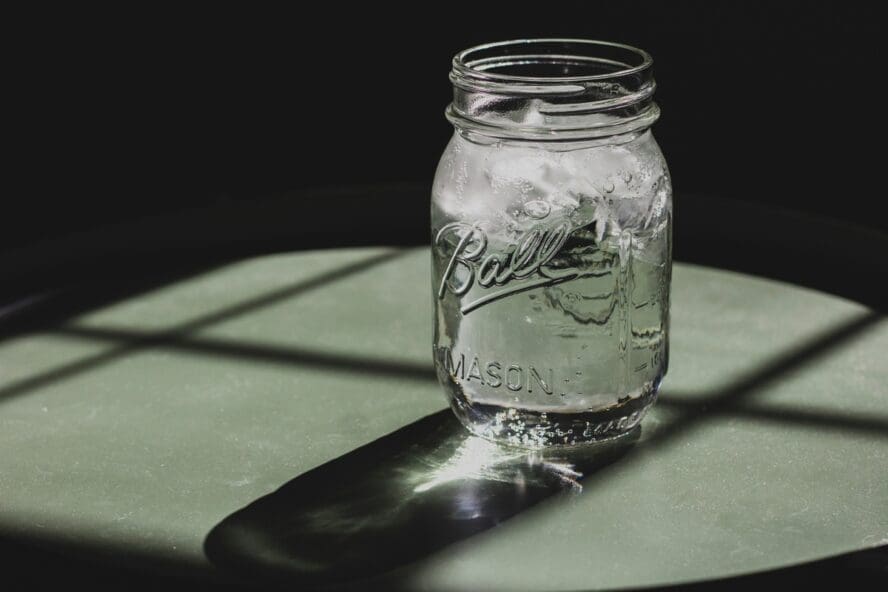
Let’s start with effective water filtration methods you can establish at home to minimize your microplastic consumption. One method is reverse osmosis (RO), which uses a pressure membrane to filter out impurities like salts, heavy metals, organic micropollutants, microplastics, and other impurities22,23,24. It’s possible to purchase a RO system and install it yourself, or hire a plumber to help.
Another effective microplastic removal method for water is ultrafiltration, which also relies on a type of pressure membrane technology. A 2025 study in Water Research reports that ultrafiltration has a microplastics removal rate range from around 72 percent up to 99 percent25.
These water filtration methods may be a bit more expensive than your standard filter, but they remove more impurities that could impact your overall health. These comprehensive water filtration systems are available in countertop and whole house systems for peace of mind that you’re removing as many microplastics as possible. Standard activated carbon filters in most water filter pitchers only remove large particles, so they likely would not remove nanoplastics from your water26. If cost isn’t an issue, these methods will provide the most peace of mind when it comes to consuming clean water.
If you’re on a budget, there are also some wallet-friendly water filtration methods for reducing microplastic exposure. These include ceramic filters, or simply boiling water before consuming.
Smart Alternatives When You Need Bottled Water
Despite the risks associated with water bottles, we understand that they’re sometimes the more practical option. But to minimize microplastic ingestion in the process, we encourage you to shift away from plastic water bottles and opt for more reusable options.

Instead of buying a case of bottled water each week or grabbing a plastic water bottle when you’re out and about, try purchasing a glass, stainless steel, or aluminum container you can fill with tap or filtered water from home. This can be as simple as a Mason jar with an aluminum lid, or even simple aluminum cups that you can fill at potable water stations. It goes without saying that this is better for the environment (and probably your wallet!), too.
To keep your glass and aluminum bottles free from microplastic contamination, engage in the following safe storage and handling practices:
- Wipe down storage area surfaces regularly with a damp towel to remove any airborne microplastic particles.
- If your bottle has a plastic cap, plastic internal liner, or plastic straw attached to it, avoid exposing the bottle to heat or acidic contents, which can break down microplastics. Or to avoid this possibility altogether, look for bottles that state they do not use plastic liners (even if they say they’re “BPA-free”).
Frequently Asked Questions
The latest research suggests that bottled water contains an average of 240,000 particles per liter, with 90% of these being nanoplastics.
Current research suggests ingesting microplastics could increase risk of cardiac disease, hormone disruption, diabetes, and more, although more studies will need to be conducted to draw definitive conclusions about human health impacts.
Yes, although the number of microplastics will vary depending on the water source, studies show that tap water typically has significantly fewer microplastics than bottled water.
The key distinction between microplastics and nanoplastics is size. Microplastics are between 5mm and 1 micrometer, while nanoplastics are less than 1 micrometer. Due to their smaller size, it’s easier for nanoplastics to enter cells, which may make them more capable of causing damage in our bodies.
Yes, water filters can help remove microplastics, although the specific method of filtration will determine how effective they are. Reverse osmosis, ultrafiltration, and distillation are most effective in removing microplastics, while standard carbon filters are not as effective.
Yes, glass bottles are safer because they do not shed plastic particles. However, remember that the source water contained in the glass bottles may still contain some microplastics.
Yes, reusable plastic water bottles can release microplastics, especially when exposed to heat, dishwashing, or physical wear and tear.
Yes, children experience higher exposure due to their smaller size, and their developing systems also make them more vulnerable to the negative health effects of consuming microplastics.
Key Takeaways
Ultimately, the key thing to remember here is to be aware rather than discouraged. While this research is concerning, there are effective steps you can take to reduce your exposure to microplastics and nanoplastics. Aside from simply avoiding bottled water, you can also utilize specialized water filtration systems in your home, choose glassware or stainless steel bottles, and opt for tap water over bottled water.
These small steps may not completely eliminate your exposure to microplastic particles in your drinking water, but they will reduce your risk significantly. And hopefully in time, advances in policies, regulations, and technology will mean we no longer have to take personal steps to minimize microplastic exposure in our drinking water. Until then, just do what you can to protect yourself and the environment while staying hopeful for the future.
Sources:
- https://www.nih.gov/news-events/nih-research-matters/plastic-particles-bottled-water
- https://wires.onlinelibrary.wiley.com/doi/10.1002/wat2.1700
- https://pmc.ncbi.nlm.nih.gov/articles/PMC12194651/#sec5-jox-15-00085
- https://www.nih.gov/news-events/nih-research-matters/plastic-particles-bottled-water
- https://pmc.ncbi.nlm.nih.gov/articles/PMC12223156/#Sec1
- https://www.sciencedirect.com/science/article/abs/pii/S0956713525003779
- https://med.stanford.edu/news/insights/2025/01/microplastics-in-body-polluted-tiny-plastic-fragments.html
- https://pmc.ncbi.nlm.nih.gov/articles/PMC11342020/
- https://pmc.ncbi.nlm.nih.gov/articles/PMC11545399/
- https://pmc.ncbi.nlm.nih.gov/articles/PMC11385141/
- https://pmc.ncbi.nlm.nih.gov/articles/PMC12154010/
- https://pmc.ncbi.nlm.nih.gov/articles/PMC12062384/
- https://pmc.ncbi.nlm.nih.gov/articles/PMC11725616/
- https://www.sciencedirect.com/science/article/pii/S0147651325008772?via%3Dihub
- https://www.nature.com/articles/s41598-024-62075-2
- https://pmc.ncbi.nlm.nih.gov/articles/PMC11191580/#s3
- https://www.fda.gov/food/environmental-contaminants-food/microplastics-and-nanoplastics-foods
- https://single-market-economy.ec.europa.eu/sectors/chemicals/reach/restrictions/commission-regulation-eu-20232055-restriction-microplastics-intentionally-added-products_en
- https://environment.ec.europa.eu/topics/plastics/microplastics_en#law
- https://pmc.ncbi.nlm.nih.gov/articles/PMC12332546/#sec4
- https://www.sciencedirect.com/science/article/pii/S2772416624000172
- https://pmc.ncbi.nlm.nih.gov/articles/PMC12195043/
- https://pmc.ncbi.nlm.nih.gov/articles/PMC11944205/
- https://www.sciencedirect.com/science/article/pii/S2214714424009012
- https://www.sciencedirect.com/science/article/abs/pii/S004313542401947X
- https://pmc.ncbi.nlm.nih.gov/articles/PMC11191580/

